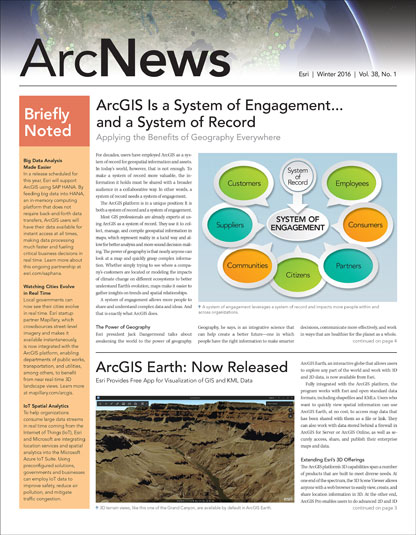Training
Geoenabling Mission Success
Military, intelligence, and national security organizations have unique functions, meaning they have special training needs as well. Esri has created a holistic curriculum to help these organizations build and sustain the geospatial capabilities needed to anticipate threats, make better decisions, determine a course of action, and share information with stakeholders.
Instructor-led courses emphasize best practices and hands-on applications of ArcGIS using realistic, scenario-driven examples. Two new offerings are as follows:
- Image Analysis with ArcGIS
This class takes learners on an in-depth exploration of image classification, covering the dynamic raster processing options available in ArcGIS. Participants establish best practices and workflows to enhance visualization and extract meaningful information from satellite imagery, lidar, and other remotely sensed data. - Portal for ArcGIS: User Workflows (for Defense and Intelligence)
This course prepares intelligence professionals to work efficiently with the content on their organizations’ portal websites so they can better support intelligence production and dissemination. Learners will master the essentials of discovering, using, making, and sharing web maps, applications, and other geospatial content.
E-learning courses and seminars also provide focused coverage on topics such as terrain analysis, lidar data, and 3D visualization. Find additional information and view more courses.
Certification
Free e-learning classes are available for candidates preparing to take an Esri technical certification exam. Each course contains sample questions that mimic the exam structure and relate to the knowledge and skills measured by the exams. Links to additional resources are included in each course. Get details from the Training Catalog.
Did You Know?
Esri technical certification exams are covered under the education and training provision of the GI Bill. Qualified candidates can purchase an exam through Esri’s testing partner, Pearson VUE, and then submit a form for reimbursement. For more information, visit the Register page.

